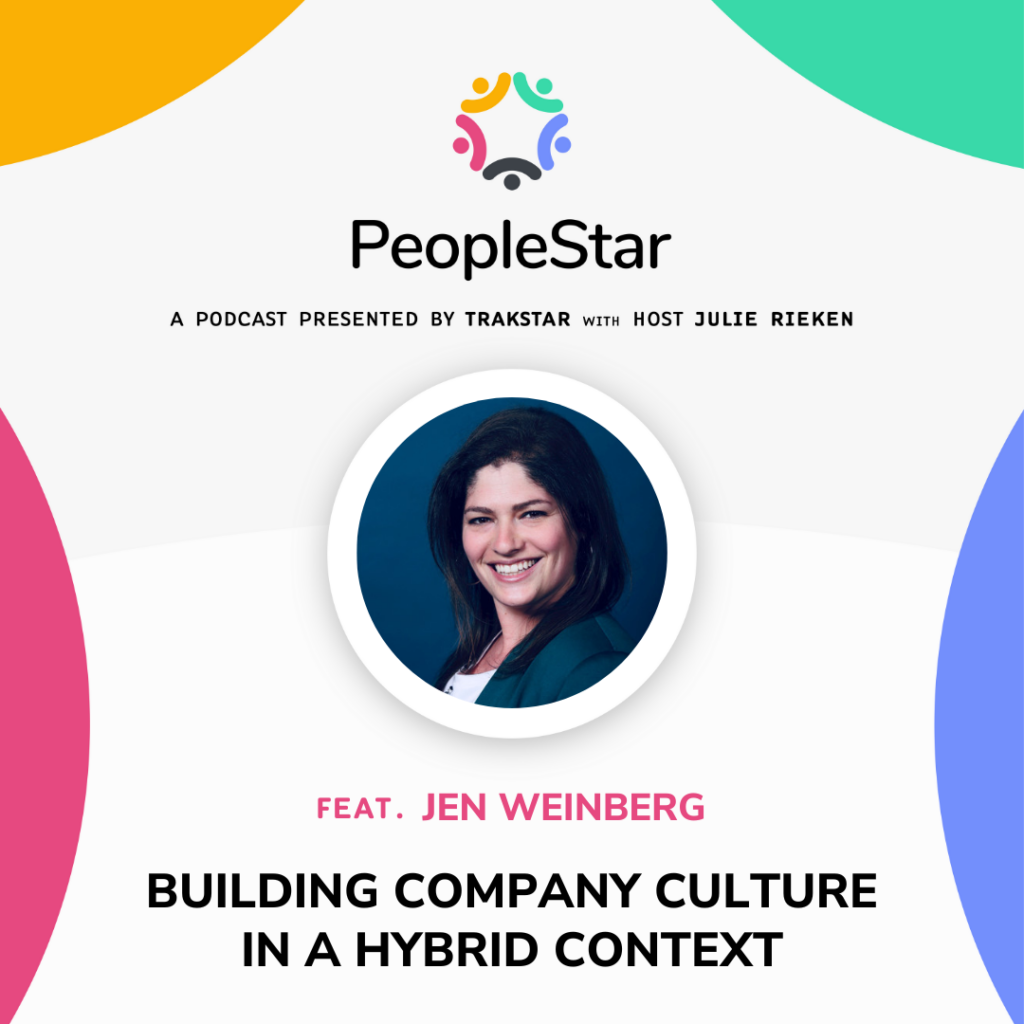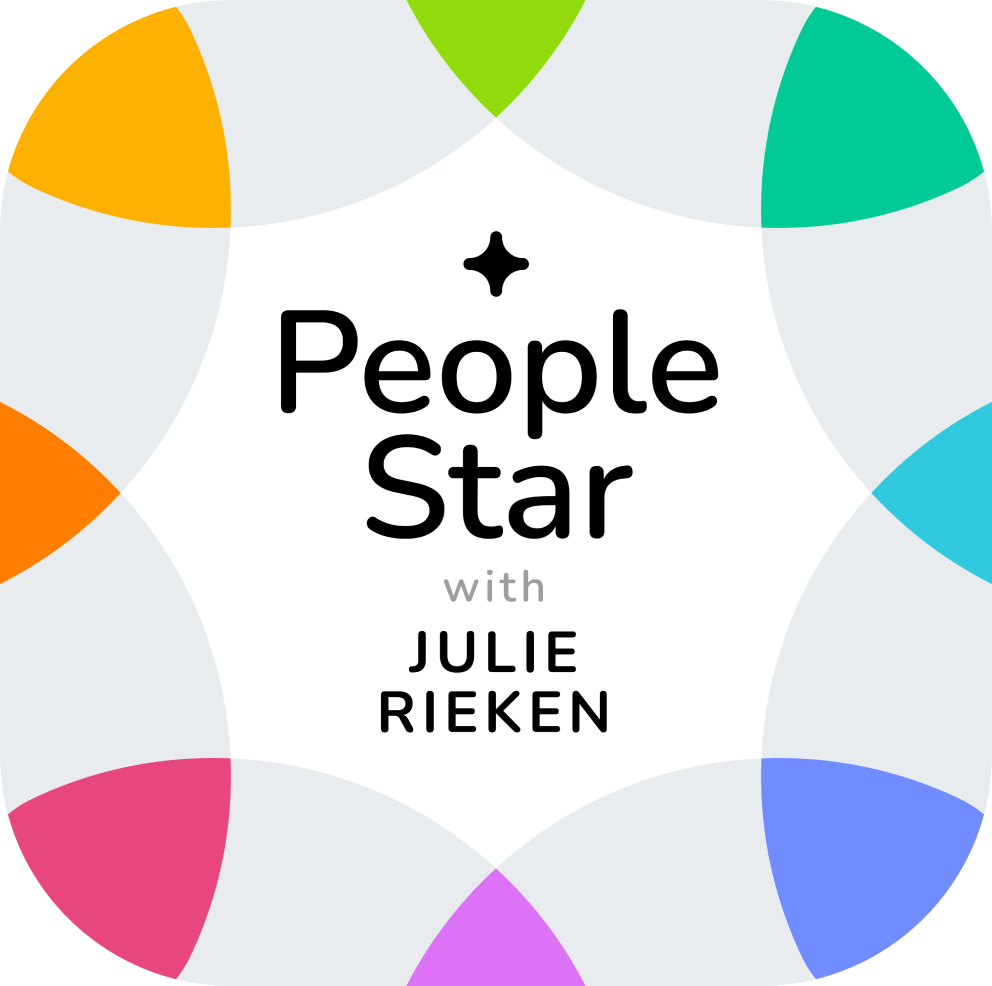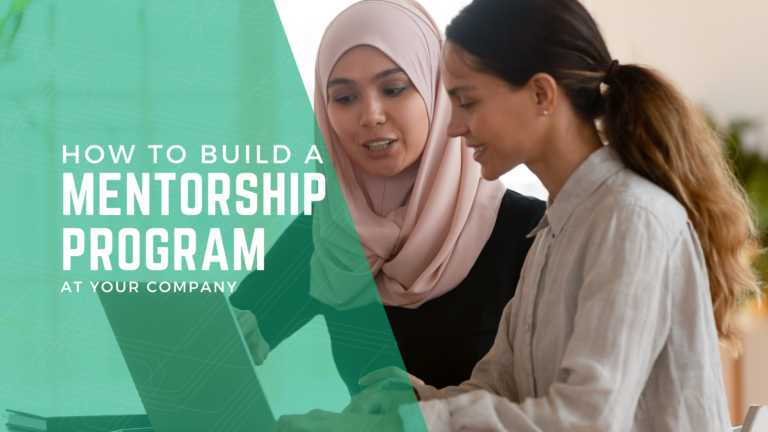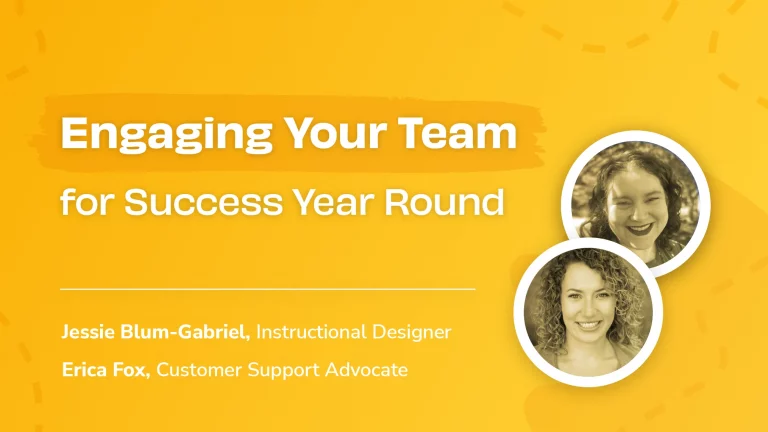PeopleStar_Jen Weinberg: this mp3 audio file was automatically transcribed by Sonix with the best speech-to-text algorithms. This transcript may contain errors.
PeopleStar Intro/Outro:
Welcome to the PeopleStar Podcast. We deliver leadership perspectives from industry experts on their people, architecture, routines, and culture as they solve HR's newest challenges. And now your host, Julie Rieken.
Julie Rieken:
Good day podcast Listeners. Julie Rieken, host of PeopleStar Podcast. Today I am delighted, I have Jen Weinberg with me from Conifer Research. Jen is the talent and culture manager and a strategic partner at Conifer Research, and she builds culture and hybrid teams while providing growth and training opportunities for both individuals and groups. And this is a big role and it's changed a lot, and we're excited to talk about that today. So Jen, welcome to the PeopleStar podcast.
Jen Weinberg:
Thank you. I'm so excited to be here.
Julie Rieken:
Me too! So, Jen, let's just start, tell our audience a little bit about Conifer and about your role, and then I think we have a really fun track to talk about today in terms of change management and how you've thought about it. But let's start with just a little bit of background about Conifer and a little bit more about what you do.
Jen Weinberg:
Absolutely, so Conifer Research is a research and innovation consultancy. We blend ethnographic research and design research techniques to gather perspective-shifting insights. And so it's a lot of client-facing work, a lot of different projects that come through our individuals on our teams work with many different people throughout the course of their day and throughout the course of the year. So it's a very interesting work dynamic as well, where they aren't necessarily on those steady-state teams, they're constantly moving around and shifting. And so part of that plays into our desire to create a consistent culture through some regular standing events. Conifer is really different in that there aren't these formal structures like on other teams, and so there's a lot of work to develop relationships outside of your project team.
Julie Rieken:
Super interesting. So, as I think about what you've just said about who Conifer is and your role, I've been thinking a little bit about the changes that you must be helping guide the organization through. And when we think about what made up organizations, what routines and recurring things used to make up teams, and we had this whole pandemic and we had to rework who we were and what we did, and now we're emerging out of it. I'm really just interested to know, how do you think about building this kind of structure? How do you think about routines and recurring meetings and have you had to adjust the way that you deliver and think about these things at Conifer? And if so, will you just tell us a little bit about this transition?
Jen Weinberg:
Absolutely, so routines are so interesting when we think about them in the workplace because they're the routines that existed in the pre-pandemic world, there's routines that have been developed here now in the remote hybrid world, and there's routines that will develop future-focused as well. But the routines that I've noticed that really stand out to me about Conifer, we had a lot of natural team building in our kitchen, in our, that went anywhere from small talk to more formal learning structures, and when we went remote or hybrid, a lot of those informal channels sort of went away. And so in order to combat that, we implemented a regular check-in that we have, a company-wide on Mondays and Wednesdays where individuals come, they give updates on their projects, there's some space for people to open up with questions, and then after, that there's just some quick banter and things like that, and that served us for a very long time. Now, though, we've realized that we're kind of beyond the regular status updates and we're really looking for deeper conversation. And so we've pivoted those meetings to have some more exciting stories about projects we're working on, not just the status update. We've used some internal tools so that we can get those status updates more regularly. We can get those whenever you want, instantaneously through some of our project management tools, and really refocused these meetings so that they are about lessons learned, about different parts of a project that may have been challenging or really successful ones. So that's one way we've taken these meetings that were sort of stale, they didn't have that same excitement, and we reinvigorated them. One other kind of standing tradition that we had was when a new employee comes in, there's a lot of opportunity in a fully in-office moment to take them out for lunch or to have them walk around and meet all the team members. Now, with that not being the case, we've been really intentional about having regular meetings on that last Friday of a new hire's first week, so that they are able to see everyone on Zoom to get to know each other, ask some quick questions from the team, have the team ask them questions, learn about what their favorite movie is, really light, but just things that we might come across in the office setting that we didn't necessarily have. So we make sure we have these very intentional meetings after a new hire's first week so that they're able to meet folks that they might not interact with from a project.
Julie Rieken:
I love that. It sure has changed. It sounds to me like, and maybe you can just tell me a little bit about your office here, one of the things that it sounds like you had was a kitchen and some conversations and things that happened in person, and then you went to Zoom. Are you still in that space or have you, in your introduction I said that you were hybrid, are you in fact, hybrid now? And can you just tell us the state of, it sounds like some of these meetings you're hosting, you've changed the content of them. How about the location? Is that the same or different than it's always been?
Jen Weinberg:
Yeah, so we are hybrid. We have most of our face is here in the Chicagoland area still, although we do have a few team members who are outside of Chicago and outside of Illinois, so it has been very different in that way. We were used to thinking of in-person office moments and then we were used to thinking of them as fully Zoom remote moments, and now we've come to this point where they're very hybrid. And so we have changed the location of some of our sand and happy hours. We did have regular happy hours that we would have in the office, they moved online to Friday afternoons, and those were great for a while, but they started to fizzle and fade over time, just given people's Zoom fatigue and things like that. So what I've done with our happy hours and our social activities is to move one in-person per month so everyone who is available can gather in the office, we can continue to have those in-person moments as well as one activity that is fully remote so that all of our team members can … that moment. So we're planning something around Earth Day as an example, which will be a virtual event that everyone can attend. And so we're very focused how we do those social interactions when some of them are online and some of them are in person to make sure everyone feels included.
Julie Rieken:
I know that's a challenge to blend all of that, which maybe leads into my next question. You help provide growth and training. How do you deliver that today? Are you doing it in person? Are you doing it remote, hybrid? How are you delivering training and growth to your team members right now?
Jen Weinberg:
It's definitely a mix of hybrid activities. We've delivered some that are fully online that I deliver here from the comfort of my living room and others that I deliver in the office, and anyone who is in the area and available comes into the office to get that in-person feeling, but we still have the Zoom and digital version of the training available as well. So we really have utilized the hybrid methodology when it comes to implementing various different trainings.
Julie Rieken:
I love that. Now, I'm going to ask you a personal question. What's working and what isn't in this hybrid environment? What do you think is the best part and what do you think is the hardest part?
Jen Weinberg:
I'll start with the hardest part because it really stands out to me. I think the hardest part is engaging folks that are physically in the room and online. I think it's a lot easier to engage with a group if they're all fully remote, but when you have some folks that are interacting in person and getting that sort of hands-on experience, while there are a few others, it's really important to be making sure that those folks that are out in Zoomland still have the opportunity to raise their hand and ask questions. I think that's definitely the most challenging, is to make sure that those individuals have opportunity to participate in the conversation. What I like most about it is, it's given us a lot of flexibility into when we can have trainings and how we can schedule them. Before they were often at the same time every week, now that we have the ability to kind of flex around people's schedules, we've been able to move those trainings at a time that's best. So it's allowed more people to be available for those training sessions, which I think has been really helpful in getting participation and getting engagement in those training sessions.
Julie Rieken:
I love that. Okay, I've got two more questions for you. Let's just say that you were, somebody said to you, how do I know when to change my meeting? How do I know if it's stale? How did you know to shift? You were saying that you had these check-ins and then you went to more deeper questions, things like, tell me lessons learned. So how did you know that you needed that change?
Jen Weinberg:
Yeah, part that was absolutely feedback from my employees. Say I have a regular cadence of checking in with everyone on the team, and we've heard from some folks that there was some disengagement with those sessions. And so incorporating that from those one-on-one conversations as well as from engagement surveys and things like that, we started to see the trend that these meetings might not be as meaningful as others. We also started to go through them very quickly, so we got through them in record timing, but that wasn't necessarily a good thing. It was that people had less and less to say and they were really focused on that status update and that was it. And that to me was an indicator that maybe we needed to change the format of these meetings.
Julie Rieken:
Yeah, I love that. So just kind of watching the pulse and knowing what you needed to change. And I had a second question, but I think I've just changed it. I want to ask you about your engagement surveys. Can you tell me how do you conduct these? What do you do and what do they look like for you at Conifer? Can you talk to me about why do you do them, the timing, and what you?
Jen Weinberg:
Absolutely, we do them twice a year at Conifer, checking in both the beginning of the year and at the midpoint as well. Want to see how things are going, if people are feeling connected from a cultural perspective, if they have the technology they need to feel connected to each other, especially in a hybrid world, check in on work-life balance and workload, and those sorts of things as well. And again, we have those twice a year so that we can put initiatives into effect early in the year and see how they're going and if we need to pivot in that mid-year evaluation and survey, then we absolutely have the data to move forward and maybe in a different direction for the remainder of the year. They've been really well received by folks. People really enjoy having the opportunity to share their opinions and thoughts and concerns in that formal avenue, although we do have lots of check-ins in between those two big surveys so that if anything is brewing, we don't have to wait necessarily until a big survey to uncover anything that might be coming up. And the survey, those are really great in terms of seeing where people focus their attention and even little things that we might not pick up as leaders come out in those surveys, and it's really important to focus in on some of those details that help us develop our strategy.
Julie Rieken:
And what do you ask in your surveys? Is it the same stuff? Is it the same questions every time, or do you vary them?
Jen Weinberg:
It's mostly the same. I have a core set of questions that I will ask for each of the surveys and then a section that is adaptable. So if there's something that we want to get a quick pulse on, we can add some questions to the end about that sort of thing, or if there's a time of the year coming up or an event, we can use that section to have some very focused concentrating questions, but otherwise for consistency, using the same questions across the surveys, so we can also have that baseline in comparison moving forward.
Julie Rieken:
I love that. I just did a piece thinking about employee engagement and we do something very similar to what you do, twice a year, a core set of questions, and then one adaptable question, and it's had really positive results for us as well. So I'm super encouraged to hear that our strategies are really similar because I feel like it's worked for us and it sounds like it's worked for you too. So that was a nice sidebar, thank you for that information. I love it.
Jen Weinberg:
Absolutely, the engagement survey is so interesting and really is foundational to a lot of the practices that I've put into place from a training and development perspective. And it's also nice to hear that it is aligned with how others are looking at that data as well.
Julie Rieken:
For sure, all right, last question, advice. If you were to give someone advice about, let's pick three things and you can pick the one that stands out to you, how do you think about routines and what's some good advice to think about keeping routines fresh? That's number one. Number two might be, advice on any engagement surveys that you might have. And the third one is about delivering training in a hybrid environment or how to manage a hybrid environment. Do you have advice on one of those topics for any of our listeners?
Jen Weinberg:
Absolutely, I'll hit that first one about routines. I think one thing that's super important is to consistently evaluate the routines that are in place. There are a lot of times where routines may have made sense and served a need, but those needs are changed. And so really keeping a pulse on those routines and making sure they're still fulfilling those same goals that you set out for when you set those up, I think it could be through formal survey, it could be through casual conversation, but really continuing to evaluate to make sure those routines are still fulfilling those goals. And if there were some that maybe worked in person but don't necessarily work anymore in a remote or hybrid environment, to create some new ones and really lean into a new era of culture and routines that can be shared with all of the current employees, employees who used to work in the hybrid or in-office setting.
Julie Rieken:
Jen, that's great advice and this has been a delightful conversation. Thank you for sharing this information with our listeners and I appreciate it. You've been a great guest. This has been super fun. Thank you.
Jen Weinberg:
Absolutely, thank you so much for having me.
PeopleStar Intro/Outro:
Thanks for listening to the PeopleStar Podcast. For the show notes, transcript, resources, and more ways to get a seat at the table, visit us at TrakStar.com/Podcast.
Sonix has many features that you’d love including automated translation, upload many different filetypes, share transcripts, advanced search, and easily transcribe your Zoom meetings. Try Sonix for free today.




